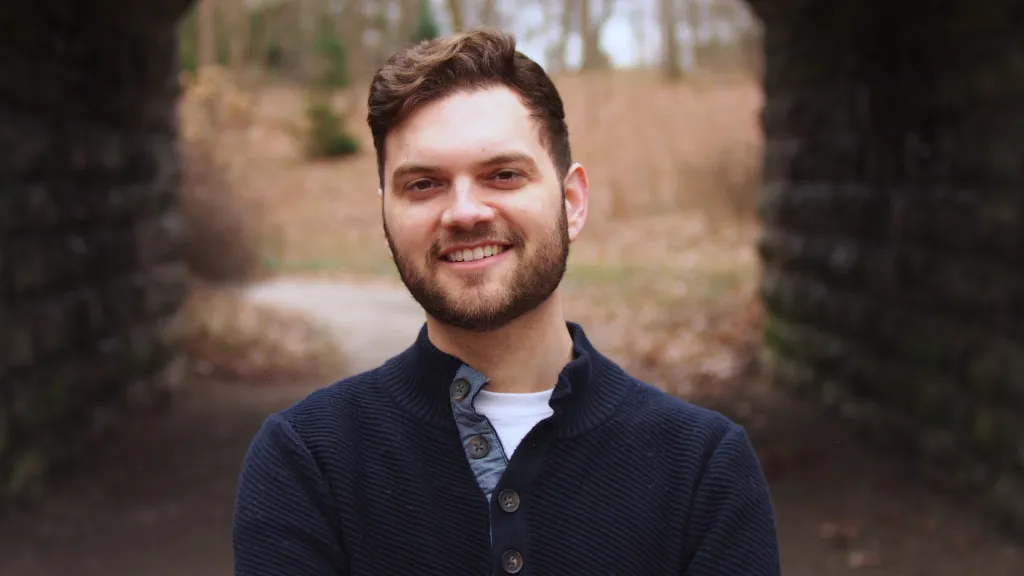Some Thoughts with ... Ryan Rose
3 Aug 2025The Author/s

Ryan Rose
Ryan Rose is a speculative fiction author and tabletop roleplaying game (ttrpg) designer. His debut fantasy trilogy, WHAT WE EAT will consist of SEVEN RECIPES FOR REVOLUTION (forthcoming Summer 2025), WHAT WE EAT #2 (forthcoming Summer 2026), and WHAT WE EAT #3 (forthcoming Summer 2027). His ttrpg work has been published with Portent Press, Spectre Creations, and broadly online. He currently lives in Oakland, CA with his partner and half-demon dog.
The Interview
1.- Could you introduce yourself to Jamreads’ readers?
Hi, Jamreads! After escaping my hometown in Central Florida, I began studying to become a chemical engineer so I could mine asteroids. Since then, I’ve mined no asteroids, but I have worked in tabletop game design, Broadway musical production, and even taught English to middle schoolers. These days, I live in Oakland with my partner and our dog, which may be a demon. I work to defend democracy at UC Berkeley, which still doesn't involve asteroid mining, but I apply that overactive imagination to conceiving of ideas (hopefully) readers don’t see coming.
2.- When did you start writing for publishing?
Though I don’t remember it, I’m told I demanded to be taught to read so that I could play Pokemon Yellow on the Gameboy Color. Video games and books became my obsession. I can remember wanting to make my own from basically the moment I have real memories, but I didn’t write my first story until my senior year of high school, when my history teacher tasked us with imagining how an authoritarian regime might come to power in a country of his choice. After that, I was hooked, immediately starting to imagine myself publishing stories and books. As it turned out, writing about authoritarian regimes got… relevant.
3.- How did the first idea for Seven Recipes for Revolution appear?
In March 2022, I was working for 70-80 weeks in a Broadway theatre, and I was drowning. I hated my boss. I’d just moved to the Northeast from Southern California. I missed the sun, craved street tacos, and wanted nothing more to finish Attack on Titan, but of course, Feb 2022 was still in the middle of the whole Season 4 Part 2 business, so I was stuck wanting on all fronts. Then, as I was walking home from a shift at 2:30 AM, I had an idea for a character: Paprick the Butcher. I got home, opened up a word document that I intended to use for character notes and wrote: “Before he was Paprick the Butcher, he was Paprick, a butcher.” I never intended for those words to open the book, but that voice became one I couldn’t forget and has started the book since that night.
4.- Could you tell us about the process behind creating Seven Recipes for Revolution?
Up until Seven Recipes, every book I’d written (6 of them) had been extensively outlined. I have spreadsheets with plot beats, worldbuilding documents, and character notes for each cast member. I knew everything that was going to happen and when. But I always found I had a hard time enjoying the writing part after that.
As I mentioned in the previous section, the opening line was meant to start my character bible, not the book. The problem was I just couldn’t stop thinking about this character and what he must’ve done to become the Butcher. I decided to quit that awful job and free-write until I got a new one. I figured I’d make the outline when I got back to work. Up until then, it took me about a year to finish a book, and I knew I couldn’t afford to be unemployed half that long, so I didn’t expect it to be a problem. Without the outline or a job though, I ended up finishing the whole thing without an outline in 2.5 months. It was a whirlwind.
5.- What inspired you to use cooking as the base of the magic system that appears in your novel?
Essa Hansen wrote a brilliant novel called Nophek Gloss, where the fuel for space travel comes from the brains of these adorable monsters called nophek. As I was reading that book, it struck me how much of our world is or was derived from animal products, everything from glue to string instruments. It got me thinking about what an animal-based magic system would look like. From there, I imagined what a medieval-ish factory farm of magic material might look like, and as a vegetarian, I knew the “material” had to be the meat.
I love cooking. I was in the kitchen with my mom and grandmas for as long as I can remember. I always felt at home there, and I knew my MC would be the same. They say write what you know, and with all these pieces coming together, I knew it was the perfect magic system for me to really put myself into.
6.- How has this book evolved from its inception to the version we are reading?
So, so much. The first draft was actually science fantasy, with the Rare wielding technology that far outpaced what we have currently. Halfway through the first draft, I knew something wasn’t quite working and stripped back almost all of the science except for “alchemic gastronomy,” which I couldn’t bear to lose.
Story-wise, my editors presented a vision of the book that sat around 110,000 words vs the 140,000 I went on submission with. It meant removing an entire character, his arc, and a major battle scene after the book’s main climax. It was the right decision. The current version is much more intricately focused on Paprick and his relationships with the common people and his mothers.
7.- If this book provoked me something was hunger (among rage and many emotions). How did you come to the recipes that finally were included? Might we eventually see a cookbook for the whole What We Eat series?
I would absolutely love to write a cookbook for the series, and everyone should email my publisher demanding one!
The main kaiju that gets eaten in the first book is a very poorly disguised giant bull, and the seven recipes that made into the section headers were each inspired by a specific cut of beef as a result. After “Paprick the Butcher,” the next thing I really sensed about the book was its setting, which is a sort of blend of the American Southwest and Northern Mexico, so I knew I wanted Tex-Mex flavors, many of which I grew up with, to be the main influences for the people that originated there (the common). In the classic Star Wars style, I wanted my Rare class to be European-coded, so I focused their cuisine around the French tradition. I felt that having a very clear conversation about French Fine Dining and the “less-refined” methods of community-style cooking developed outside Europe would serve as a great backdrop for the class conflicts.
8.- Which other three books would you recommend to people that enjoyed Seven Recipes for Revolution?
Empire of the Vampire by Jay Kristoff. Kristoff’s worldbuilding skill and frame-story were critical influences on Seven Recipes, and I’m deeply honored he ended up blurbing the book.
Nophek Gloss by Essa Hansen. There’s truly nothing like Essa’s imagination, and beyond the inspiration of the nophek, Essa’s main character also opened my eyes to how a thoughtful author can play with tropes.
The Ruin of Kings by Jenn Lyons. Another frame-story with a character in prison like Empire of the Vampire, but also a queer normative world that gave me the confidence to present an authentically queer story wholeheartedly.
9.- What can we expect from Ryan Rose in the future?
The What We Eat trilogy will continue next Summer (exact date TBD) with the recently finished book 2, Eight Tastes of Treachery. WWE will then wrap the following summer with Nine Courses of Calamity, which I’m having a blast writing.
Beyond that, I have another novel in a different genre that is about to go on submission and many, many hopes that I will continue to be able to publish novels that push the boundaries of traditional publishing for years beyond.
